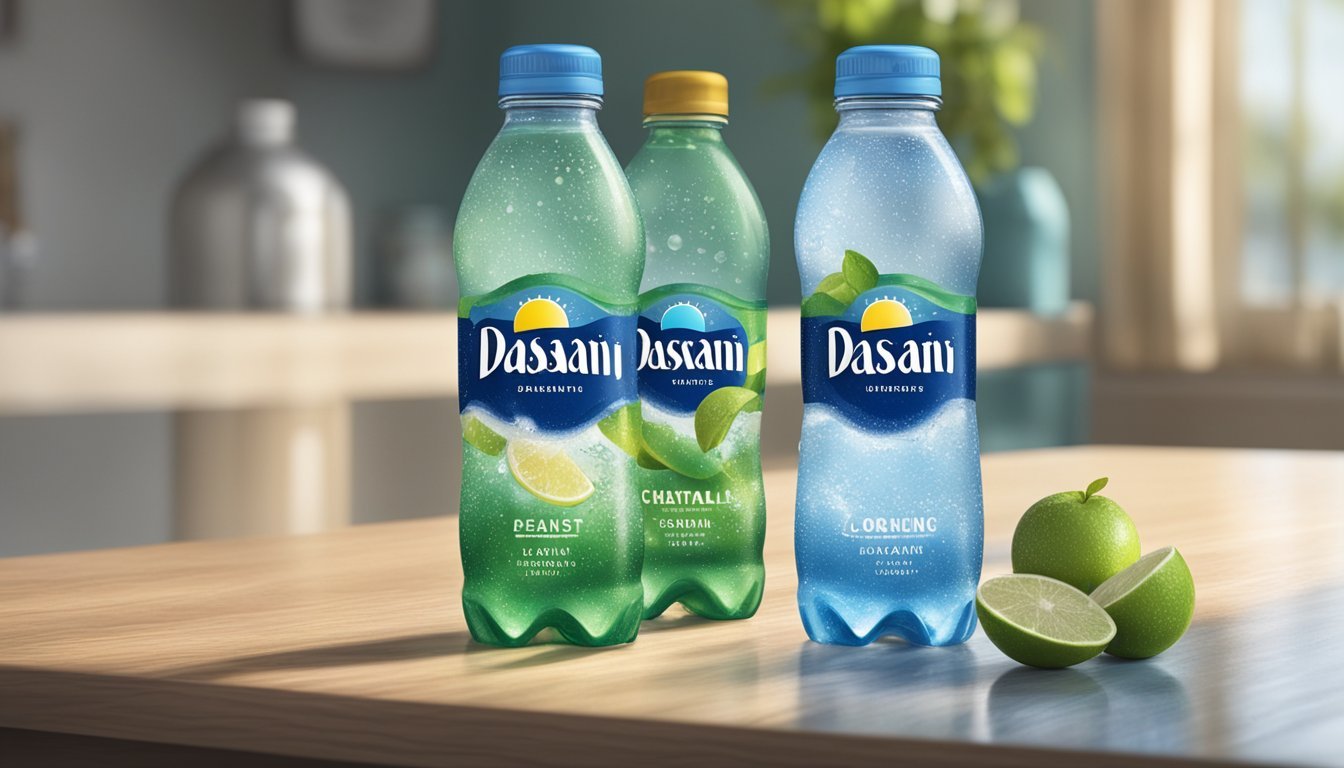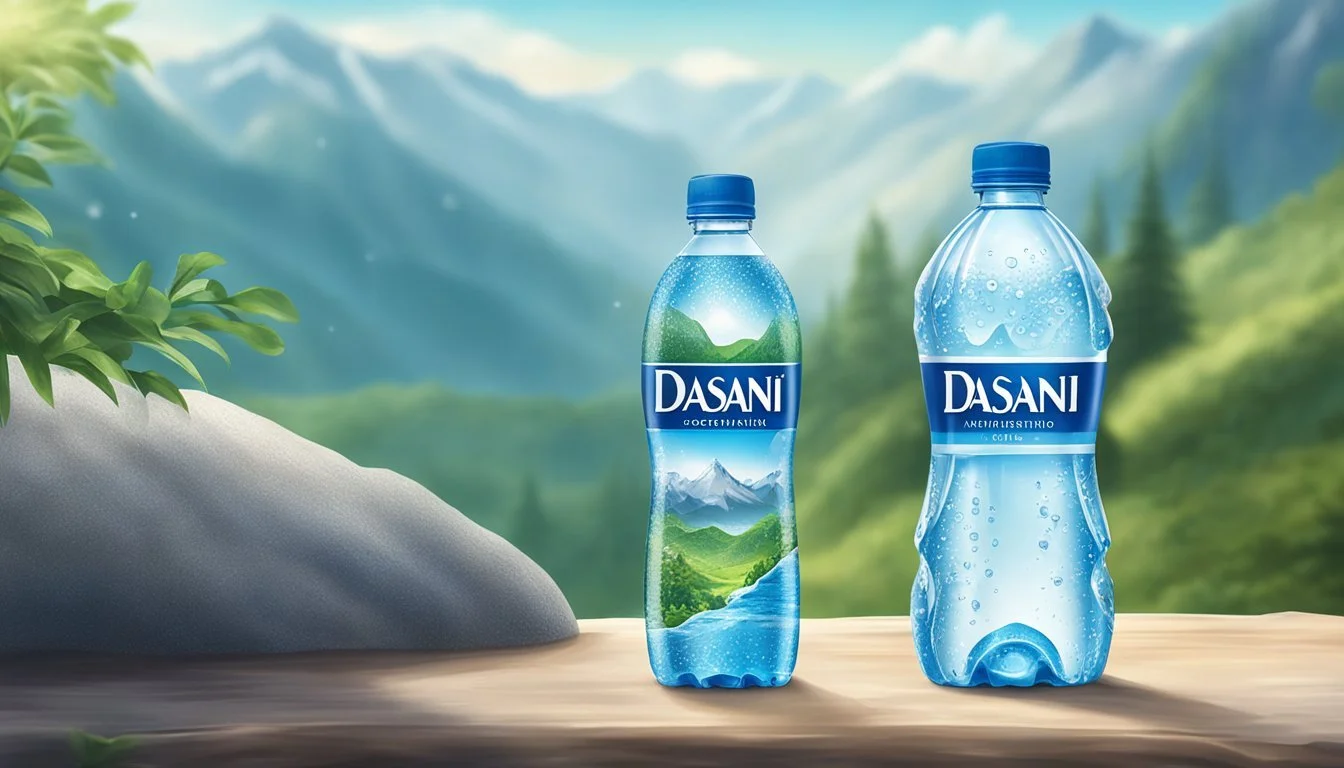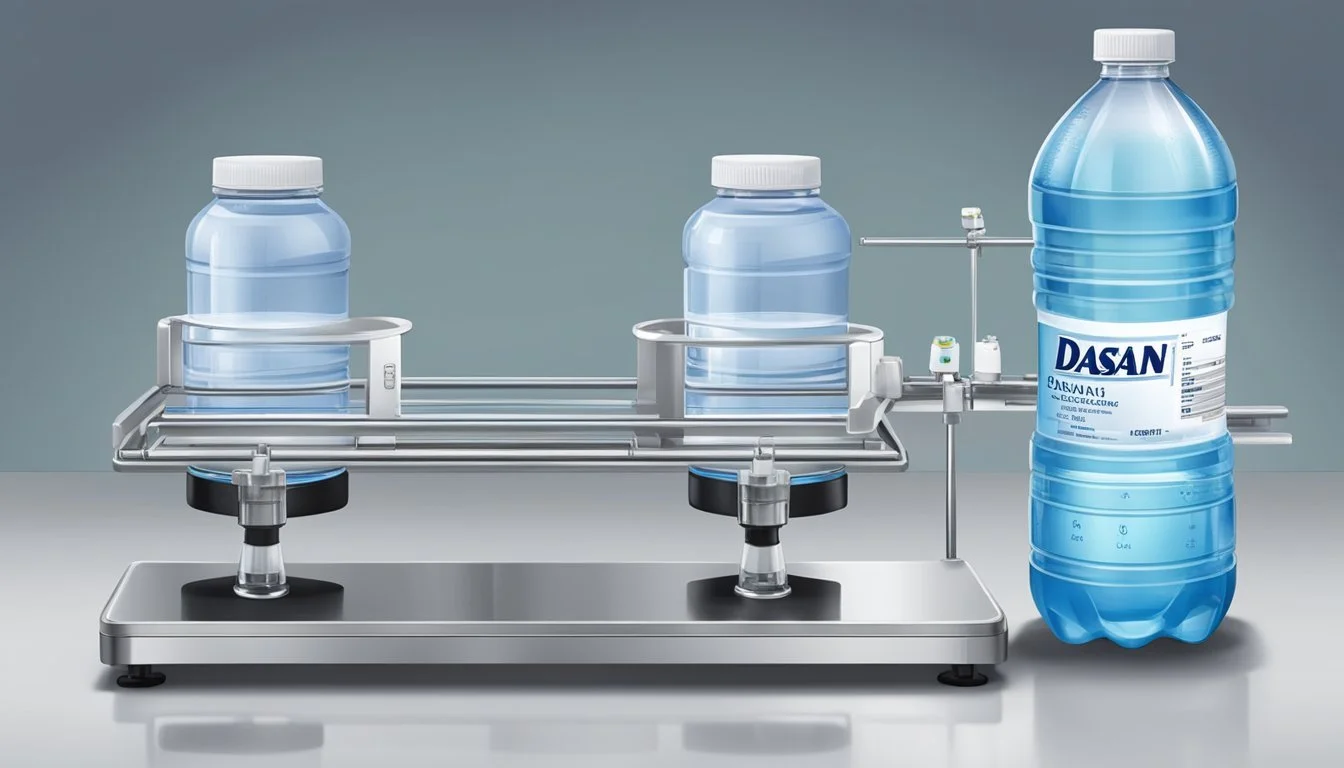Action vs. Dasani
Comparing Quality and Taste in Bottled Water
Choosing between Action and Dasani bottled water can be challenging, especially for those who prioritize taste, purity, and brand reputation. Dasani, owned by Coca-Cola, offers purified water that's enhanced with minerals for a fresh, clean taste. In contrast, Action promises ultra-purified water through an advanced filtration process, making it a popular choice for those seeking high-quality hydration.
For those who prioritize mineral balance and purity, Dasani stands out with its added minerals and reliable purification process. Conversely, Action is equally appealing to health-conscious consumers due to its emphasis on ultra-purification without any added ingredients. While both brands hold strong market positions, individual preferences regarding taste and purity play a significant role in determining the better option.
Ultimately, understanding the key differences in water quality and taste can help consumers make an informed choice between Action and Dasani. Whether it’s the mineral-enhanced profile of Dasani or the ultra-pure promise of Action, each brand caters to specific hydration needs and flavor preferences.
History and Brand Overview
Dasani, a brand owned by Coca-Cola, has a significant history in the bottled water industry. Action Water, although newer, is steadily gaining popularity with its distinct approach to water purification.
The Evolution of Dasani
Dasani was introduced by Coca-Cola in 1999.
The brand was developed to compete in the rapidly growing bottled water market.
Dasani uses a purification process involving reverse osmosis and adds a proprietary blend of minerals to enhance the taste.
In the early 2000s, Dasani faced setbacks in Europe due to controversies over its source and mineral content.
Despite initial challenges, Dasani has maintained a strong presence in North America.
The brand leverages Coca-Cola's extensive distribution network to ensure availability in various markets.
Dasani's marketing often emphasizes its clean, crisp taste and consistent quality.
Action Water: The Emerging Competitor
Action Water has made a name for itself with its unique purification process and commitment to sustainability.
Founded in the late 2010s, Action Water focuses on delivering high-quality hydration with an eco-conscious approach.
Action Water employs a multi-step purification process which includes advanced filtration techniques to remove impurities.
The brand emphasizes its use of biodegradable packaging and minimal environmental impact.
Action Water's marketing strategy highlights transparency in its sourcing and processing methods.
As a newer entrant, Action Water appeals particularly to younger consumers who prioritize environmental responsibility.
The brand has quickly expanded its market share through strategic partnerships and innovative marketing campaigns.
Source and Purification
Action and Dasani take different approaches to sourcing and purifying their water, each employing unique methods to ensure cleanliness and quality.
Dasani's Filtration Process
Dasani, owned by The Coca-Cola Company, sources its water from municipal supplies. This water undergoes an extensive purification process known as reverse osmosis.
Reverse osmosis effectively removes impurities and contaminants, ensuring that the water is free of dissolved solids.
After filtration, Dasani enriches the water with a proprietary blend of minerals, which contributes to its crisp taste.
Action's Approach to Purification
Action sources its water from natural springs located in pristine environments. This ensures the water begins with a certain level of purity.
The purification process at Action includes several stages, beginning with basic filtration to remove larger particles.
Next, the water undergoes hydro-7 and ultraviolet light treatments, which work together to eliminate microorganisms and other contaminants.
Finally, the water is filtered again to maintain its natural minerals, providing a clean yet refreshing taste.
Nutritional Content and Health Benefits
Aquafina and Dasani offer varying levels of minerals and electrolytes, pH levels, and hydration benefits. Each of these elements contributes uniquely to the overall nutritional content and health advantages of the water.
Minerals and Electrolytes
Aquafina primarily focuses on providing purified water with minimal mineral content. It undergoes a rigorous purification process that removes most impurities and minerals. As a result, Aquafina contains very low levels of electrolytes, which can be a downside for those looking to replenish minerals through their drinking water.
Dasani, on the other hand, enhances its water with a proprietary blend of minerals, including magnesium and potassium chloride. These added minerals create a cleaner, crisper taste and can help replenish lost electrolytes. The inclusion of minerals such as potassium is beneficial for maintaining electrolyte balance in the body, crucial for muscle function and overall health.
Understanding pH Levels
Aquafina has a pH level close to neutral, typically around 5.5 - 7, which aligns closely with the pH of most purified water. This range ensures the water is neither too acidic nor too alkaline, making it safe for regular consumption.
Dasani also maintains a pH level near neutral, often fluctuating between 5 - 7. The neutral pH is critical as extreme pH levels can sometimes affect taste and safety. For those concerned about acidity or alkalinity, both brands provide a balanced pH, ensuring their water is appropriate for hydration without disrupting the body’s natural pH balance.
Hydration and Health
Aquafina ensures essential hydration by offering purified water free from contaminants and unnecessary additives. The low mineral content makes it a good choice for those seeking plain, straightforward hydration without added elements, suitable for daily consumption.
Dasani’s approach includes enhancing water with minerals to improve taste and potentially aid in quicker hydration due to the presence of electrolytes. Electrolytes like potassium and magnesium are vital for various bodily functions, including nerve transmission and muscle contraction. Therefore, drinking Dasani may offer slight health benefits, particularly in maintaining electrolyte balance.
Both brands are bottled in recyclable materials, emphasizing environmental consciousness. The choice between Aquafina and Dasani largely depends on individual preferences for taste and mineral content.
Taste Profile
Taste is a key differentiator between Action and Dasani bottled waters, influenced by mineral content and purification processes. Consumer preferences and taste tests highlight these variations.
Role of Minerals in Taste
Mineral content significantly influences the taste of bottled water. Dasani adds a proprietary blend of minerals, including magnesium sulfate and potassium chloride, which gives it a distinct mineral flavor. This added mineral profile aims to create a crisp, clean taste that many consumers recognize.
Action, on the other hand, may have a different mineral composition depending on the source and purification process. The presence or absence of specific minerals can affect whether the water tastes neutral or has discernible flavors.
Mineral content can also impact consumer preferences, with some people favoring the more robust taste of mineral-enhanced waters, while others prefer a subtler flavor.
Impact of Purification on Flavor
The purification processes used by bottled water companies play a crucial role in defining taste. Dasani employs reverse osmosis, a method that removes impurities and minerals from the water. Following this, it adds back a specific blend of minerals to achieve a desired taste profile.
Action may use different purification techniques such as distillation, carbon filtration, or ultraviolet disinfection, which can variably impact flavor.
Reverse osmosis in Dasani results in a taste that some describe as clean and crisp. In contrast, other methods like vapor distillation (used by Smartwater) can lead to a smoother but less mineralized flavor.
Taste tests often reveal that purification impacts whether water tastes pure or has residual flavors from the filtration process. Choices in purification can, therefore, cater to different segments of consumer preferences.
Quality and Safety Standards
Ensuring the quality and safety of bottled water involves rigorous compliance with regulatory standards and effective filtration processes. This section examines the regulatory requirements and the efficacy of contaminant removal for both Action and Dasani.
Regulatory Compliance and Scrutiny
Both Action and Dasani adhere to Health and Safety Standards set by the Food and Drug Administration (FDA), which regulates bottled water as a food product. Compliance with these standards ensures that the water is safe for consumption.
Action and Dasani undergo regular inspections and are subject to strict scrutiny to maintain quality control. They follow guidelines for source protection, treatment processes, and labeling. This regulatory framework guarantees that the water meets the required safety and quality specifications.
Contaminants and Filtration Efficacy
Effective filtration is essential to remove contaminants from bottled water. Both brands use advanced purification methods to ensure the safety of their products. Dasani utilizes reverse osmosis and adds a blend of minerals after filtration for taste enhancement. Action employs a multi-step filtration process to ensure purity.
Tests show that the filtration efficacy of both brands successfully reduces contaminants to safe levels. They maintain a pH level close to neutral, which is considered ideal for drinking water. Ensuring zero calories and sugar content, both companies provide a healthy hydration option.
Environmental Considerations
Both Aquafina and Dasani strive to minimize their environmental impact through sustainable packaging and sourcing practices.
Packaging and Recyclability
Aquafina packages its water in PET plastic bottles, which are 100% recyclable. In recent years, they have made efforts to reduce the plastic content in each bottle, making the packaging lighter and more eco-friendly. They also offer options for biodegradable bottles to appeal to environmentally conscious consumers.
Dasani also uses 100% recyclable PET plastic bottles. To further reduce their environmental footprint, Dasani has introduced the PlantBottle, which incorporates up to 30% plant-based materials. This innovation aims to decrease reliance on fossil fuels. Nonetheless, consumer responsibility in recycling remains crucial for both brands.
Water Source Sustainability
Aquafina sources its water from public water supplies and ensures a stringent purification process. By relying on municipal sources, Aquafina reduces the necessity to tap into natural groundwater reserves, which can aid in preserving local ecosystems.
Dasani similarly sources water locally from municipal water supplies across its distribution regions. The water undergoes an extensive purification process, including reverse osmosis. By doing so, Dasani minimizes the impact on natural water bodies and promotes a responsible approach to water sourcing.
In summary, both brands emphasize sustainability through responsible sourcing and innovations in packaging, aiming to lessen their overall environmental impact.
Market Presence and Consumer Perception
Both Action and Dasani have made significant impacts in the bottled water market, leveraging strong branding and experiencing varying consumer opinions and controversies.
Branding and Market Share
Action is a relatively new player with aggressive marketing strategies targeting health-conscious consumers. They emphasize sustainability and eco-friendly packaging. Their branding often focuses on athletes and active lifestyles.
Dasani, owned by The Coca-Cola Company, has been in the market since 1999. With a well-established brand, Dasani benefits from extensive distribution networks.
Comparatively, Dasani holds a larger market share due to its long-standing presence and affiliation with Coca-Cola. Action is gaining ground with niche markets, particularly among younger, environmentally aware demographics.
Public Opinion and Controversies
Public opinion on both brands varies. Action is generally seen positively due to its eco-friendly initiatives and health-focused branding. Social media platforms like Twitter and YouTube often highlight its commitment to sustainability.
Dasani has faced scrutiny for its use of tap water as the source and adding minerals for taste. During the early pandemic, Dasani struggled as evidenced by being less favored during mass bottled water purchases.
Consequently, Dasani has dealt with controversies related to its source and purification methods. Consumer preferences often swing based on these perceptions and publicized controversies.
Comparison Summary
Each brand has distinctive features that weigh heavily in the decision-making process. Key preferences might hinge on factors like purification processes, mineral content, and sustainability practices.
Choosing Between Dasani and Action
Both Dasani and Action use advanced purification methods. Dasani utilizes reverse osmosis and adds a proprietary blend of minerals, enhancing taste. Action's HydRO-7 filtration stands out for its 7-step process aimed at removing impurities.
When considering health, Dasani offers water with zero calories and added minerals, which some may find appealing for its taste. Action's rigorous filtration suggests a high purity level, potentially favored by those sensitive to additives.
Environmental impact is crucial. Dasani's 100% recyclable bottles demonstrate a commitment to sustainability. While specific details about Action’s bottle materials aren't provided, environmentally aware consumers should consider packaging.
Personal preference ultimately plays a significant role. Some might prefer Dasani's taste due to the mineral blend, while others might appreciate Action's purity from fewer additives.








